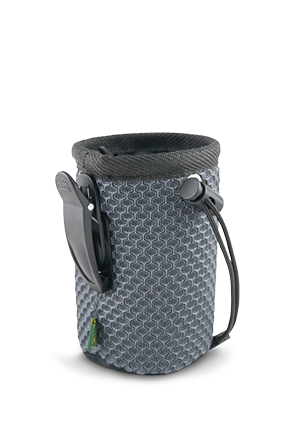Going for a walk with your dog
Long or short walks are part of a dog’s everyday life. And dog lovers are just as happy as their four-legged friends about spending time together. But what should you consider when walking, how does exercise affect a dog’s health and how much time should you plan to walk every day?
Where does the German term for walking the dog (Gassi laufen) come from?
The exact origin of the expression “Gassi laufen” is unclear. It presumably comes from the word “Gasse” meaning alley. In old European towns in particular, there are many narrow streets between the rows of houses. Historically, a dog would have therefore been “led into the alley” to get its exercise. Although nowadays it is more popular to take dogs out for a walk in the countryside, the term has still caught on.
Regular walking is important for dogs!
A walk is more than just exercise for the dog. Time away from home is important for the health of adult dogs as well as for the healthy development of puppies.
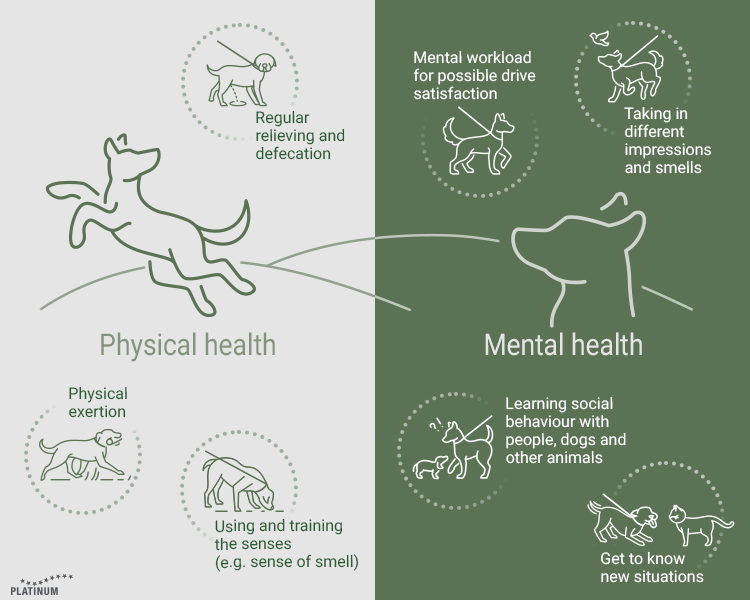
Some drives, which are thought to be characteristic of our four-legged friends because they descend from wolves, are theoretically no longer necessary due to living together with humans. For example, man’s best friend no longer needs to hunt down meals. However this urge may still be pronounced in some breeds. This explains why regular exercise combined with mental stimulation is so important for a dog’s overall health.
Dog does not want to go for a walk
The owner may plan out their daily routine and the time with their four-legged friend, and suddenly the dog doesn’t want to go for a walk. It is not uncommon for dogs to refuse to move, leaving their owners baffled. The causes are not always an indicator poor health; they can be very diverse.
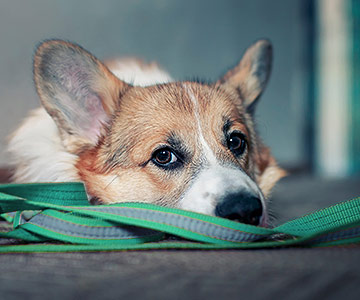 Sometimes dogs refuse to go for a walk
Sometimes dogs refuse to go for a walk
Reasons a dog may refuse a walk
Finding the exact cause of a certain dog behaviour is often not so easy. If you did not take your four-legged friend in when they were a puppy, it is likely that they had a bad experience in the past and do not want to go for a walk. But this is just one of many possible reasons. Other triggers can be:
- Link with negative experiences
- Pain or lack of fitness
- Climate, e.g. extreme heat or cold
- Uncertainty
- Fear
- Sluggishness due to wrong food
- Boredom
Tips for more fun when walking
Different dog breeds have different requirements, but also each dog has individual needs, you need to research the causes!
Have a health check
Offer variety when walking
Sluggishness due to wrong food
Bad experiences or fear
Adapt the walk to the climate
10 questions and answers about walking the dog
There are a few things to bear in mind to make your walks a pleasure for both dog owner and four-legged friend. Even if dog walking is second nature to you, there are still a lot of questions. From the right lead to the duration of the walk to legal aspects, we have explored ten important questions.
1. How often should you take a dog out?
Even though many dog owners would like one, there is no one-size-fits-all answer. Because how often a dog needs exercise outside depends on many factors:
- Age
- Size
- Dog breed
- Duration of the activity or run
- Character
- Other mental activities indoors
2. How long should I walk a dog for?
Just like the frequency of walks, the duration of walks is highly individual and depends on the factors mentioned. You will often come across recommendations of two long walks a day plus two shorter walks. You can consider this a rough guideline, but you should adapt it to the needs and health of your dog.
3. Which lead is best for walking?
The type of lead you use to walk your four-legged friend depends on its function, your personal preference and, if applicable, the breed of dog. Here is a rough overview of the most common types of dog leads:
| Lead type | Function | Length |
|---|---|---|
| Lead line | Classic, for leading the dog close to the body on lead when going for a walk | Approx. 1.5 m - 2 m, adjustable if necessary |
| Retriever lead |
Combines collar and lead | Approx. 1.5 m - 2 m |
| Retractable or flexi lead | Can be pulled in and out depending on how far away the dog is when walking it | Average 4 m - 10 m |
| Flat lead | Long, lightweight lead, suitable for training or when a dog does not walk safely without a lead | Large range from approx. 5 m - 20 m length |
| Multiple dog lead | Lead extension for walking multiple dogs on one lead | Length depends on the selected base line |
4. Where is it compulsory for dogs to be on a lead in Germany?
Lead requirements vary between federal states.
5. Walk before or after dinner?
Generally, it is recommended that dogs have a small digestion break after a meal. Running around wildly or rolling on their back can lead to gastric torsion, especially in larger breeds.
6. What should be in the dog’s bag for a long walk?
On long walks or hikes lasting several hours, you may also pack the dog some provisions such as snacks and water. Special doggy bags are suitable for storing all the necessary equipment. Drinking breaks are particularly important for your four-legged friend's health if you are constantly exercising over a longer period of time. Our “Hiking with dogs” article provides detailed tips and a checklist for trips with your four-legged friend.
7. How long can a dog go without being walked?
Generally, adult dogs can go a few hours without a walk. At night, dogs can easily last up to 8 hours without having to go outside. However, puppies should be given the opportunity to relieve themselves about once every 2 hours. If you feel that a puppy needs to go out less often during the night, you can slowly increase the time. During the day, you should not overdo this time and should offer your four-legged friend regular exercise and movement. Generally, house-trained four-legged friends will let you know when they urgently need to go outside. Puppies, on the other hand, are not yet able to do this.
8. What happens if you don’t walk the dog?
The first consequence of not going for a walk will be that they will relive themselves indoors. However, healthy adult dogs are extremely reluctant to do this. If you don’t give your dog enough exercise over a long period of time, this can have further consequences:
- Boredom or frustration
- Weight gain due to lack of exercise
- Jumping around to get rid of excess energy
9. How much exercise can puppies have?
As puppies are not house-trained to start with and can only control their bladder from a certain age, they should go outside more often than adult dogs. The duration of their walks should also be shorter. A general rule of thumb is that puppies are allowed to walk for 1 minute per week of life. So when a puppy is 12 weeks old, it should walk for about 12 minutes per walk. With increasing age, the time and the intervals between the walks can be slowly increased. You should not include getting to know other animals, playing or exploring the garden in this time. Wild romping should not be underestimated, however, and should be stopped if appropriate in order to calm the puppy down. This is because some dog breeds, especially when they are puppies, do not understand when they are tired and need to rest.
10. How many calories does a dog burn while walking?
Calorie requirements are very individual as they depend on the breed, age, size and weight of the dog. Besides, not all walks are the same. Some dogs trot along at a leisurely pace and other breeds walk briskly. It also makes a difference if the dog is on a lead or if it is mainly roaming free. As you can see, it is a very complex issue. Therefore, we recommend reading more about a dog’s calorie requirements here.
Product recommendation
The benefits of PLATINUM dog food
- PLATINUM uses a unique preparation method called FSG, which offers numerous advantages compared to conventional dog food.
- Dog food prepared with FSG is gently cooked only in its own meat juice and is therefore nutrient-rich like BARF, excellent for building muscles and also extra tasty for your dog.
- With at least 70% fresh meat in the dry dog food and 83% fresh meat or fresh fish in the wet dog food, PLATINUM places great value on a composition of the food that is adapted to the needs of dogs.
- The declaration and composition of dog food prepared with FSG is tested regularly and independently by ELAB Analytik GmbH (formerly TÜV SÜD ELAB) - for canine health protection.
- PLATINUM is generally very well accepted by dogs of all breeds and ages. Even four-legged friends with sensitive digestion or intolerances usually tolerate PLATINUM dog food well.
- All products are free of soya, GMOs and gluten. In addition, no flavour enhancers, attractants, odourants or colourings are used.
- Over 2,000 positive customer reviews at Trusted Shops speak for themselves!


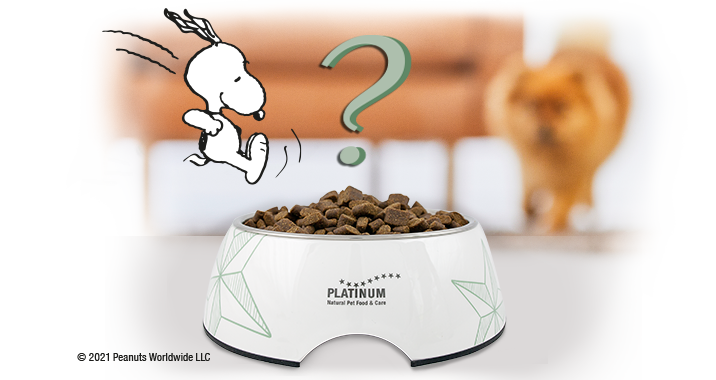






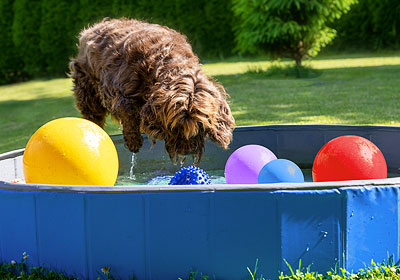




.png)
.png)
